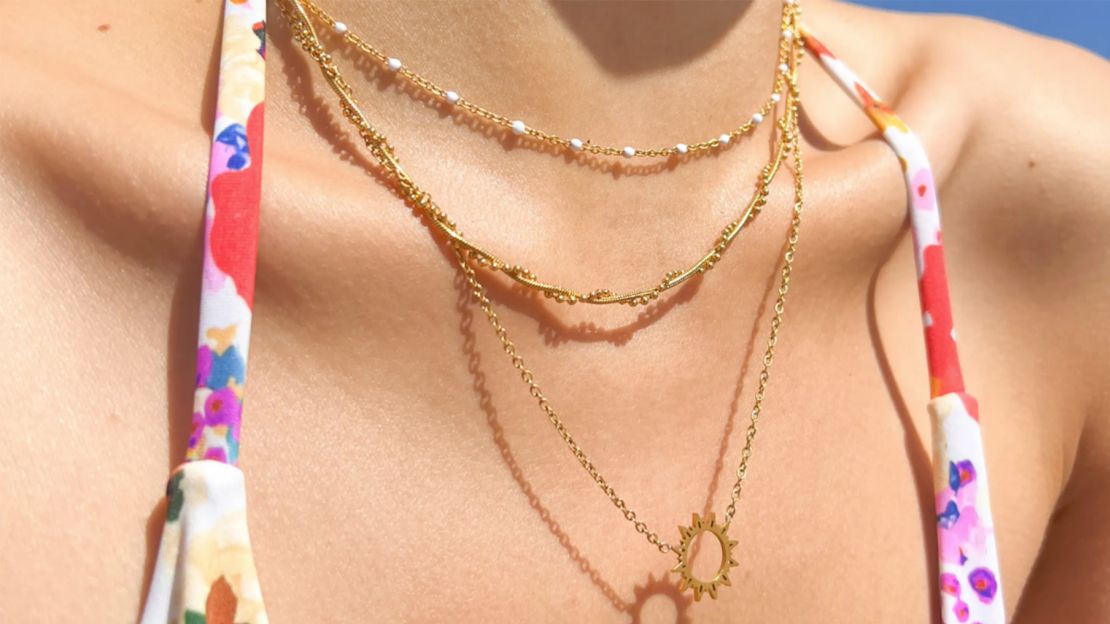The world of jewelry is vast and enchanting, filled with treasures that offer a touch of elegance and sophistication. However, one common challenge many jewelry enthusiasts face is the tarnishing of their beloved pieces. Tarnish occurs when jewelry reacts with environmental elements, leading to a loss of shine and appeal. Enter tarnish proof jewelry—a revolutionary concept that promises lasting brilliance and a flawless look. In this article, we delve into the world of tarnish proof jewelry, exploring its benefits, different types, and tips for choosing the perfect pieces to elevate your style.
What Is Tarnish Proof Jewelry?
Tarnish-proof jewelry is specially designed to resist the effects of tarnishing, which is caused by reactions between metals and air, moisture, or other elements. These pieces maintain their shine and lustre for extended periods, allowing you to wear them without worrying about discoloration or dullness.
The Science Behind Tarnish Proof Jewelry
Tarnish-proof jewelry utilises advanced techniques and materials to prevent tarnishing. For example, some pieces are coated with a thin layer of rhodium, which acts as a protective barrier against environmental factors. Other methods include using non-reactive metals such as stainless steel, titanium, or platinum, which naturally resist tarnish.
Benefits of Tarnish Proof Jewelry
Tarnish-proof jewelry offers numerous advantages, including:
- Longevity: These pieces retain their shine and beauty over time, reducing the need for frequent polishing or replacement.
- Low Maintenance: Tarnish-proof jewelry requires minimal care, making it a convenient choice for busy individuals.
- Hypoallergenic: Many tarnish proof options are made from non-reactive metals, which can be a safer choice for those with sensitive skin.
- Versatility: Tarnish-proof jewelry comes in various styles and designs, making it easy to find pieces that match any outfit or occasion.
Types of Tarnish Proof Jewelry
There are several types of tarnish proof jewelry to choose from, each with its unique characteristics:
- Stainless Steel Tarnish-Proof Jewelry: Known for its durability and resistance to corrosion, stainless steel is an excellent choice for tarnish-proof jewelry.
- Platinum Tarnish-Proof Jewelry: This rare metal is naturally resistant to tarnish and offers a luxurious, high-end option for jewelry lovers.
- Titanium Tarnish-Proof Jewelry: Lightweight and strong, titanium jewelry is not only tarnish proof but also ideal for those seeking hypoallergenic options.
- Rhodium-Plated Tarnish-Proof Jewelry: Jewelry coated with rhodium provides a bright, reflective finish while protecting the underlying metal from tarnishing.
Tarnish Proof Jewelry for Different Occasions
Tarnish proof jewelry is perfect for various occasions, whether formal or casual:
- Tarnish-Proof Jewelry for Everyday Wear: Opt for tarnish proof pieces that are simple and versatile, such as stainless steel or titanium bracelets, necklaces, or rings.
- Tarnish-Proof Jewelry for Formal Events: Elevate your look with luxurious platinum or rhodium-plated pieces that exude elegance and sophistication.
- Tarnish-Proof Jewelry for Outdoor Activities: Choose durable options like stainless steel or titanium, which can withstand exposure to the elements.
How to Choose Tarnish Proof Jewelry
When selecting tarnish proof jewelry, consider the following tips:
- Material for Tarnish Proof Jewelry: Opt for metals known for their resistance to tarnish, such as stainless steel, platinum, or titanium.
- Design for Tarnish-Proof Jewelry: Choose pieces that suit your style and preferences, whether minimalistic or bold.
- Brand Reputation in Tarnish-Proof Jewelry: Research reputable brands known for their quality and craftsmanship in tarnish-proof jewelry.
- Budget for Tarnish-Proof Jewelry: Tarnish-proof jewelry is available at various price points, so determine your budget before making a purchase.
Caring for Tarnish Proof Jewelry
While tarnish proof jewelry requires minimal maintenance, it’s essential to take some care to prolong its lifespan:
- Avoid Harsh Chemicals with Tarnish Proof Jewelry: Keep your jewelry away from chemicals such as cleaning agents, chlorine, and perfume.
- Store Tarnish-Proof Jewelry Properly: Store your pieces in a dry, cool place, preferably in a jewelry box with separate compartments.
- Clean Tarnish-Proof Jewelry Gently: Use a soft, lint-free cloth to wipe your jewelry and remove any dirt or fingerprints.
Tarnish Proof Jewelry Trends
As the demand for tarnish-proof jewelry grows, so does the variety of styles and designs available. Some current trends include:
- Mixed Metals in Tarnish Proof Jewelry: Combining different tarnish proof metals, such as stainless steel and rose gold, creates a unique and stylish look.
- Statement Pieces in Tarnish-Proof Jewelry: Bold, eye-catching designs are popular for those who want to make a statement with their jewelry.
- Minimalist Designs in Tarnish-Proof Jewelry: Simple, sleek pieces are timeless and versatile, perfect for everyday wear.
Tarnish Proof Jewelry as Gifts
Tarnish-proof jewelry makes an excellent gift choice for loved ones. Consider these options:
- Personalised Tarnish Proof Jewelry Pieces: Customized jewelry adds a thoughtful touch, making the gift even more special.
- Classic Styles in Tarnish-Proof Jewelry: Timeless designs, such as solitaire necklaces or hoop earrings, appeal to a wide range of tastes.
- Matching Sets of Tarnish-Proof Jewelry: Gift sets that include a combination of necklaces, bracelets, and earrings offer a coordinated look.
The Future of Tarnish Proof Jewelry
As technology advances, the future of tarnish-proof jewelry looks promising. Expect to see more innovative materials and coatings that enhance the durability and aesthetics of these pieces. Additionally, sustainable and ethically sourced materials may become more prevalent, aligning with the growing demand for eco-friendly options.
Conclusion
Tarnish-proof jewelry offers a new era of shine and flawless looks, providing jewelry enthusiasts with the opportunity to enjoy long-lasting, low-maintenance, and beautiful pieces. Whether you’re dressing up for a special occasion or looking for everyday accessories, tarnish proof jewelry is a smart choice that ensures your collection remains radiant and timeless.
FAQs
Q1. What metals are naturally resistant to tarnish?
Metals such as stainless steel, platinum, and titanium are naturally resistant to tarnish, making them excellent choices for long-lasting jewelry.
Q2. How should I clean jewelry to maintain its shine?
Use a soft, lint-free cloth to gently wipe your jewelry. Avoid harsh chemicals or abrasive materials that could damage the finish.
Q3. Can jewelry be repaired if it gets scratched?
Yes, many types of jewelry can often be repaired by a professional jeweller. However, the repair process will depend on the type of metal and the extent of the damage.
Q4. Is there jewelry suitable for sensitive skin?
Many jewelry options are hypoallergenic and safe for sensitive skin. Metals such as titanium and platinum are particularly gentle on the skin.
Q5. Are there any downsides to jewelry that resists tarnishing?
Jewelry that resists tarnishing is generally durable and long-lasting, but it may be more expensive than traditional jewelry. Additionally, some coatings may wear off over time, requiring re-plating or additional care.
Also read: Black and Cream Living Room Ideas: 10 Timeless Elegance



